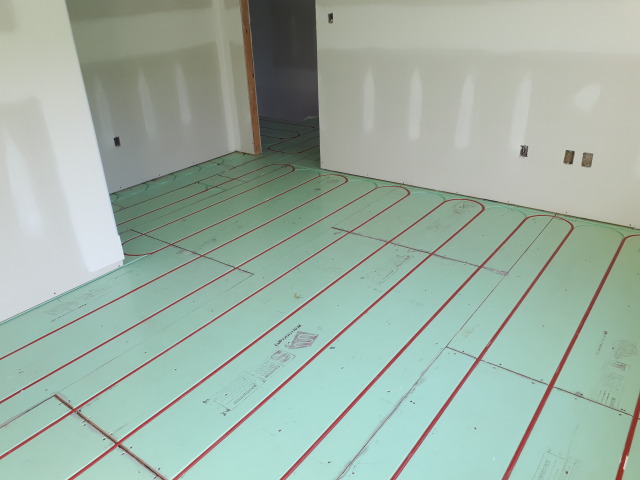
However, hardwood, cork and even carpet are also viable floor surfaces for this type of heat. Though stone flooring is rare in modern homes, ceramic tile is not and that is the most common flooring surface used in homes that use radiant heat. Hydronic radiant floor heating was invented a couple thousand years ago, when the Romans figured out that running warm water, steam or air through channels under a stone floor was an effective way to heat their living spaces. Here in the Lower Mainland you have access to an experienced hydronic radiant floor heating team, capable of doing the complete installation of the floor, heating tubes, boiler and control systems, in Efficient Furnace.

Though it isn’t beyond a highly-skilled handyman, it is a task best left to trained professionals. If you are considering a home improvement project that includes in-floor radiant heating, properly installing all those pipes, whether embedded in concrete or not, can seem quite daunting. Heating pipes can also be attached to wooden sub-floors with specially-designed staples and suspension clips. The tubes that carry the warm water for an in floor heating system are usually embedded in a concrete slab, although other methods can be used. Temperatures in zones (rooms) easily controlled.Stays warm for a long time in the event of power outage.Water is the same temperature as hot tap water so one boiler can do it all.Reduction in spread of allergens and dust.A boiler is the most efficient way to warm the water.Hydronics is the most cost-effective space heating system.Using this form of radiant heat to warm your home has a number of advantages, such as: Benefits of Heated FloorsĪ hydronic heating system pipes warm water under a floor to heat the space above it. That’s the luxurious bonus that comes with radiant heating, but far from the main reason to consider it.

If you haven’t experienced it, just think about having warm floors to step onto as you get out of bed in the morning. All the while enjoying a much better quality, low maintenance heat.Have you experienced radiant floor heat? Though still relatively uncommon in houses it has been used in hotels for a couple decades now. You can expect about 6 years until your extra costs are made up by the energy savings you realize. Sure the up front costs are higher than a traditional forced air system but not by that much. When you integrate you not only simplify and therefore lower your total costs but you also will be saving space and energy. Will you only heat the basement floor? How about the upper floors too? Maybe the garage? What about snow melt and domestic hot water? The beautiful thing is one single boiler can take care of all of the above and even heat your swimming pool or hot tub not to mention provide heat for forced air systems should you want them through hydronic air handlers that use the hot water to heat the air. It is best to plan things out well in advance. All this and 30% energy savings compared to before we installed radiant floor heating during the renovation! Would never go back to traditional forced air furnaces. We walk around barefoot from the basement to the second floor all year round. The whole house feels simply put comfortable. You forget that this is the heating season. The source of heat is most often a gas or electrical boiler, but we can work with wood burning boilers, oil fired ones, heat pumps, geothermal and anything else that can be used to make waters warmer than 120F. Radiant heating can be installed in floors, walls and ceilings, with the most common place for the tubing is to be encased in concrete in your basement slab, on upper floors stapled to the sub-floor and over-poured with self leveling Agilasilica concrete. Since we moved in I saw my attacks greatly reduced in both frequency and intensity… In our new house we opted for radiant floor heating as this is what the Asthma and Allergy Foundation is recommending.

You simply are comfortable like on a warm spring day. In a house that is heated with radiant floor heating you don’t feel hot, cold, you don’t even realize that the heating system is on. There is no noise, dust, clogged filters, ducts or wind. Infrared rays from the floors warm up objects they hit, providing uniform heat from the floor to the ceiling. Hydronic radiant heating is the best way to heat a house.


 0 kommentar(er)
0 kommentar(er)
